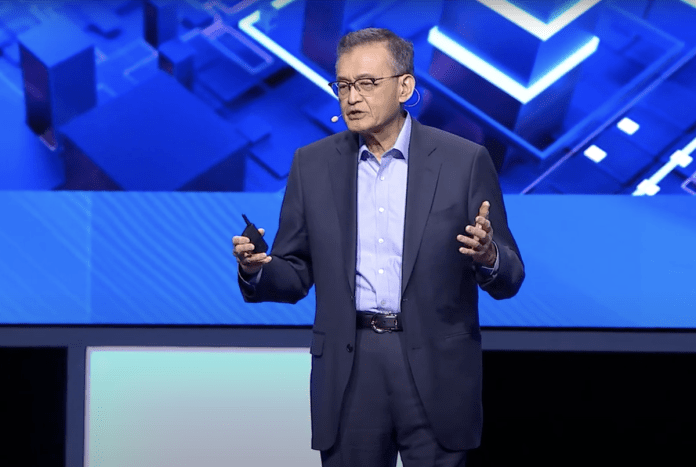- Tan to authorise new fabs construction only when demand is already present, leading to delays in ongoing work in Ohio and putting expansion plans in Poland and Germany on ice.
- Tan warns that if Intel can’t land a major outside customer for the 14A process, it may be forced to exit advanced chip manufacturing altogether.
Intel’s new CEO, Lip-Bu Tan, has wasted no time shaking up the company’s long-standing operations. Intel announced it would finish this year with a workforce 22 per cent smaller than in 2024, marking one of the largest reductions in its history.
The majority of these cuts have already been executed, as Tan aggressively pursues a leaner, more focused Intel.
Since stepping in this March, Tan has initiated the divestment of side businesses, continued significant layoffs, and redirected resources in a bid to remedy years of declining fortunes.
Intel has slipped badly in areas that now define the semiconductor landscape: its presence in the booming artificial intelligence (AI) chip market is practically nonexistent, ceding ground to Nvidia.
At the same time, archrival AMD has chipped away at Intel’s dominance in both PC and server markets. Meanwhile, Intel’s big bet on entering chip manufacturing for other firms—staking claims against powerhouse TSMC—has not delivered the hoped-for results.
In an internal memo, Tan made it clear he is calling time on the old ways. “There are no more blank checks,” he told employees.
“Every investment must make sense, and we’ll only build what our customers actually need, when they need it.”
This cost-discipline is expected to filter through every part of the company. Notably, finance chief David Zinsner said they have eliminated about half of Intel’s management layers, aiming for a simpler, faster organisation.
Headcount to drop to 75,000 by year-end
From a hiring perspective, Intel’s headcount will drop from 96,400 at June’s end to about 75,000 by year-end—a planned 22 per cent reduction compared to last year. Most of this will happen through attrition and various staff optimizations.
Tan is also changing strategy on capital-heavy projects. For decades, Intel built new fabs ahead of anticipated demand, sometimes constructing facilities the market didn’t need.
Now, Tan will authorise new construction only when demand is already present, leading to delays in ongoing work in Ohio and putting expansion plans in Poland and Germany on ice.
Chip packaging activities in Costa Rica will be merged with Intel operations in Vietnam and Malaysia to further consolidate operations.
The technological pivot centers on two advanced manufacturing processes: 18A and 14A. Under Tan, 18A will only serve Intel’s own products, as economic returns for foundry work have proven elusive. The next-generation 14A process is at a crossroads.
Third-quarter projections
The company’s latest financial filings openly state: if Intel can’t land a major outside customer for the 14A process, it may be forced to exit advanced chip manufacturing altogether.
Looking ahead, Intel has projected a third-quarter loss of $0.24 per share, which is noticeably deeper than the consensus forecast of a $0.18 per share loss.
Despite this, the company remains optimistic about its revenue, expecting it to land between $12.6 billion and $13.6 billion. The midpoint of that range—$13.1 billion—comfortably beats the average analyst estimate of $12.65 billion, offering a sliver of reassurance to investors.
For the second quarter, which concluded on June 28, Intel reported flat revenues at $12.9 billion. This ended a four-quarter slide in sales and exceeded analyst expectations, which were set at $11.92 billion.
Adjusted losses for the June quarter came in at $0.10 per share; this was significantly under the estimated $0.01 per share profit. On an unadjusted basis, losses reached $0.67 per share, much steeper than the anticipated $0.26 per share loss.
A major factor behind these numbers was Intel’s continued investment in expanding manufacturing capacity and research. These actions reflect the company’s strategic play to reclaim ground in the fiercely contested semiconductor market.
On top of these investments, Intel absorbed restructuring charges of $1.9 billion in the second quarter, the result of broad job cuts as part of its ongoing cost-saving efforts.
Minimising risk
As the only American company capable of producing advanced chips in-house, Intel’s possible withdrawal from leading-edge manufacturing would mark a historic pivot.
Such a move would shift Intel’s reliance to external foundries like TSMC, narrowing strategic options and leaving it at a disadvantage to competitors like AMD, which have deep, proven relationships with those foundries.
Additionally, Intel’s heavy investment in chipmaking equipment—valued at around $100 billion—would take a massive hit if the 14A line is halted, likely resulting in enormous write-downs.
Tan insists that things are different this time, especially with 14A’s development occurring in close collaboration with potential customers—something he felt was lacking for the 18A process. This new customer-centric focus aims to minimise risk and better match technology development with actual market demand.
“We learn from our mistakes,” Tan said in a post-earnings call. “We can learn quicker and get a better result.”
Discover more from TechChannel News
Subscribe to get the latest posts sent to your email.




